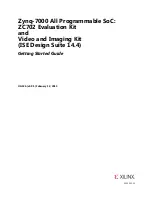
SATEL ACU-270
7
the
and
keys, find the controller name and press the key to start the “step by
step” programming. The functions to start synchronization and to enter / exit the test
mode are available in the 3. W
IRELESS MOD
. submenu (
2. H
ARDWARE
1. K
PDS
&
EXPS
.
3. W
IRELESS MOD
.).
the
DLOADX program:
– INTEGRA / INTEGRA Plus – in the “Structure” window, “Hardware” tab, after clicking on
the controller name in the list of devices (Fig. 4);
– VERSA / VERSA Plus / VERSA IP – in the “Versa – Structure” window, “Hardware” tab,
after clicking on the controller name.
5.1 Parameters, options and functions
Name
– individual name of device (up to 16 characters).
Tamper signaled in partition
– the partition in which tamper alarm will be triggered in the
event of module tamper.
No auto-reset after three module tamper alarms
– if this option is enabled, the feature
reducing the number of tamper alarms from the module to three is disabled (the feature
prevents multiple logging of the same events and applies to successive uncleared alarms).
Response period
– communication with wireless devices takes place in specified intervals.
The controller is then gathering information on the status of wireless devices and, if
necessary, sending commands to the devices, e.g. switching the detectors to their
active/passive state, switching on/off the test mode and/or changing configuration of the
devices. The response period can be 12, 24 or 36 seconds. The less often communication
between the controller and the wireless devices takes place, the more wireless devices
can work within each other's operating range (12 seconds – up to 150, 24 seconds – up to
300, 36 seconds – up to 450). Beyond the response period, information about tampers of
devices and violations of detectors operating in active mode are sent to the controller. The
response period has an effect on the level of energy consumption by the wireless devices.










































